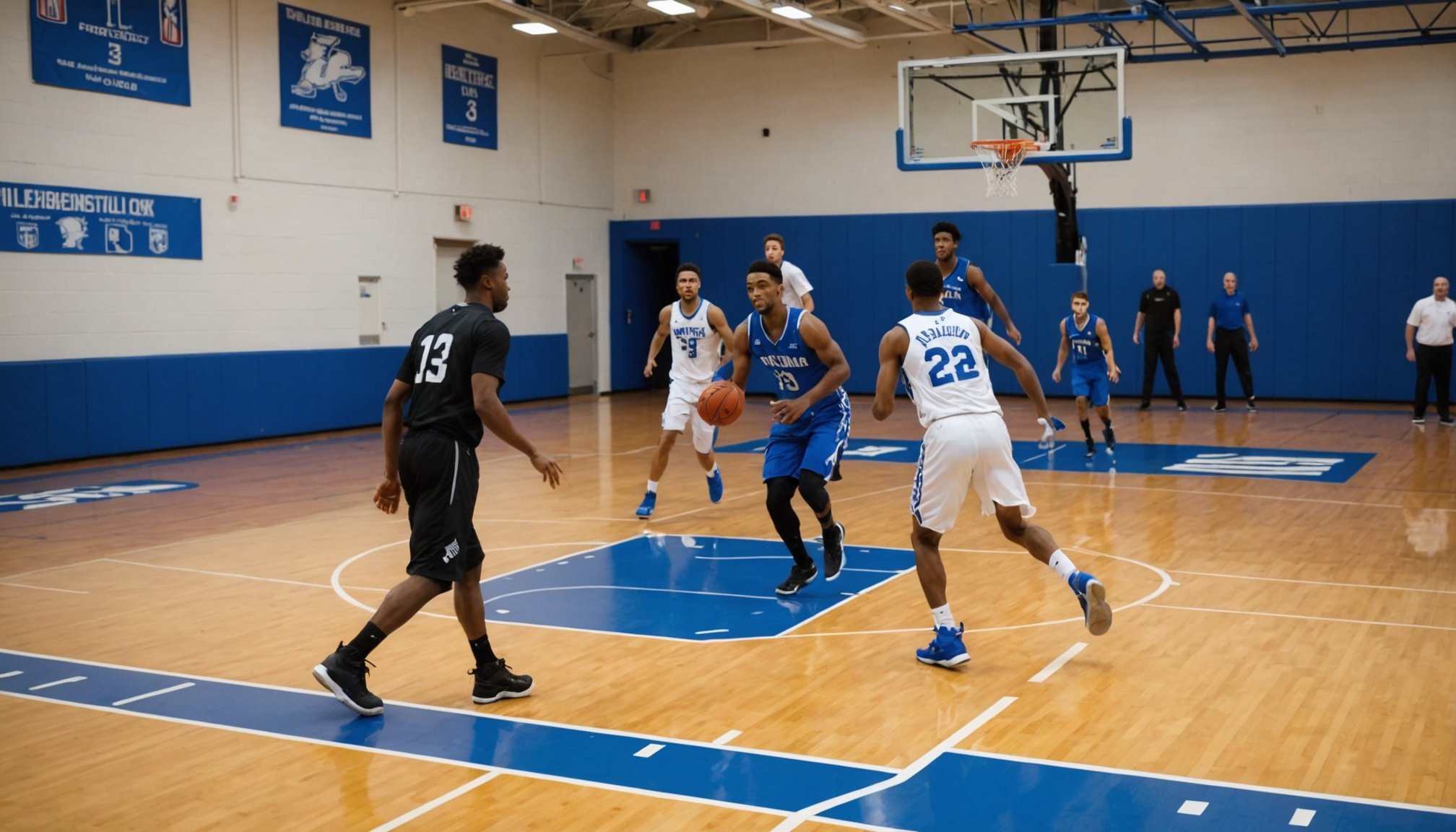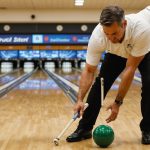Overview of Lateral Quickness in Basketball
Lateral quickness is a crucial component of a basketball player’s defensive skills. It involves the ability to move sideways efficiently to keep up with offensive players. This skill is essential for maintaining effective defense against quick opponents, as it allows defenders to react swiftly to dribbles, cuts, and screens.
In the realm of basketball, lateral quickness directly impacts overall gameplay. Players with superior lateral movements are better positioned to contest shots, intercept passes, and force turnovers. These actions can shift the momentum of the game and create opportunities for the player’s team to score.
Have you seen this : Enhancing court awareness: top strategies for uk basketball players to elevate spatial vision
Studies have underlined lateral quickness’s importance in defense. Research suggests that defenders with enhanced lateral quickness can effectively reduce an opponent’s shooting percentage. Proper basketball training targeting kinesthetic agility and lateral speed can improve these defensive skills. Players often engage in drills such as lateral shuffles, cone drills, and agility ladder exercises to boost their quickness.
In summary, prioritizing lateral quickness within basketball training is vital for anyone looking to enhance their defensive performance and overall competitive edge in the sport.
Also read : Boosting performance: essential tactics for uk basketball players to conquer mid-season challenges
Essential Defensive Drills for Enhancing Lateral Quickness
Incorporating defensive drills into your routine is crucial for boosting lateral movement capabilities. These drills focus on improving agility and increasing reaction times, aiding in comprehensive skill development on the court.
Drill 1: Defensive Slides
Defensive slides are a fundamental part of quickness training, emphasizing proper footwork. To perfect defensive slides:
- Begin in a low stance with knees bent.
- Push off forcefully from your lead foot while keeping your weight balanced.
Adding resistance bands can increase the difficulty and effectiveness of this drill, leading to enhanced lateral quickness.
Drill 2: Cone Drills
Cone drills replicate real-game conditions, promoting efficient lateral movement. Set up cones in a zigzag pattern, and move swiftly from one to the next, emphasizing sharp, controlled movements. Progress through various sequences to match your skill development level, and build up to more complex patterns.
Drill 3: Ladder Drills
Ladder drills focus on improving foot speed and agility through diversified patterns like in-out or side shuffles. Use ladders to maintain quick-footedness in defensive drills, and try integrating them into regular practice to see significant improvements. Practicing consistently will make these drills the cornerstone of your quickness training regimen.
Incorporating Drills into Practice Sessions
Balancing both drills and game strategies in practice is essential for achieving optimal results. When considering training frequency, it’s vital to align sessions with player skill levels. Aim for consistent routines but avoid over-scheduling. For beginners, practicing two to three times a week can offer enough exposure without burnout. In contrast, advanced players might benefit from more frequent training, up to four or five times weekly, focusing on skill refinement.
Practice integration should carefully combine drills with strategic game play. This not only enhances versatility but ensures that players understand how specific techniques apply within a game context. It’s also important to tailor the difficulty and complexity of drills based on experience. Less experienced players may start with fundamental exercises that boost confidence, while seasoned players can handle advanced, dynamic drills that challenge their proficiency.
A practical approach to practice integration is the 70/30 rule: spend 70% of your time on fundamental skills and 30% on game-specific strategies. Such a balance ensures athletes are well-rounded, preparing them for a variety of situations encountered during actual play. Remember, cultivating adaptable skills through tailored practice integration can significantly improve overall performance.
Insights from UK Basketball Coaches
In the realm of UK basketball, coaching insights play a pivotal role in shaping players’ performance and skill development. Key to excelling in basketball is enhancing lateral quickness. Renowned UK basketball coaches emphasize the importance of drills focusing on agility and speed, critical to both offensive and defensive play.
Training Techniques
UK basketball programs incorporate unique training methodologies tailored to boost players’ lateral movement. Coaches frequently employ agility ladders, cone drills, and plyometric exercises to enhance quick footwork and overall speed. These training techniques prioritize muscle strength and coordination, vital for rapid directional changes on the court.
Testimonial and Case Studies
Endorsements from seasoned UK players highlight the effectiveness of these drills. One notable testimonial details a coach’s use of resistance bands to simulate game scenarios, offering a practical solution to improve player agility. Case studies from UK basketball academies further illustrate that these techniques significantly reduce injury risks while improving game performance. Player feedback consistently indicates that such targeted training helps translate practice gains into competitive advantage during games.
Coaching insights from the UK underscore that focusing on lateral quickness and adopting specialized training routines is crucial for developing well-rounded and competitive basketball players.
Video Resources and Visual Aids
Accessing video tutorials and training resources can significantly enhance visual learning. Videos provide dynamic demonstrations, making it easier for learners to grasp complex drills quickly.
Recommended Video Links for Drills
Finding quality instructional videos is essential for effective training. Look for tutorials that break down techniques into manageable steps, use clear footage, and include expert commentary.
- High-quality examples: Videos by reputable coaches or organizations offer trustworthy instruction.
- Key elements: Pause and playback features, along with detailed slow-motion segments, aid in understanding.
Diagrams and Illustrations
Visual aids, such as diagrams and illustrations, are invaluable for understanding drills. They offer a static representation that can be studied repeatedly for clarity. When creating or locating comprehensive diagrams, ensure they highlight crucial details and techniques.
- Purpose of diagrams: Provide a visual shorthand to complex movements.
- Tips for use: Annotate with notes on posture or motion to maximize their effectiveness.
Leverage these tools to boost your visual learning and enhance your training experience. They serve as an excellent complement to hands-on practice.
Monitoring Progress and Performance
Maintaining clear performance tracking is crucial for athletes aiming to enhance their skills. The first step involves setting measurable goals that create benchmarks for improvement. These benchmarks serve as a reference point for assessing progress over time. In particular, when working on lateral quickness, consistent tracking of improvement can significantly benefit an athlete’s development.
Methods for Tracking Improvements
To effectively track lateral quickness, utilising video analysis and timing mechanisms can provide visual and quantitative feedback. Such tools help in identifying areas needing improvement by capturing details that might not be noticeable in real-time practice. Consistent monitoring allows for a detailed skill analysis.
Importance of Self-Assessment
Another essential component is having regular self-assessments. Athletes must engage in honest evaluations of their performance, comparing their results against set benchmarks. This process enables individuals to tailor their training strategies effectively. Strategies like maintaining a performance journal or using a dedicated app can encourage constructive feedback.
Implementing these methods in practice sessions ensures that athletes not only track progress accurately but also develop a deeper understanding of their capabilities, enhancing overall performance and achieving their desired outcomes.
















